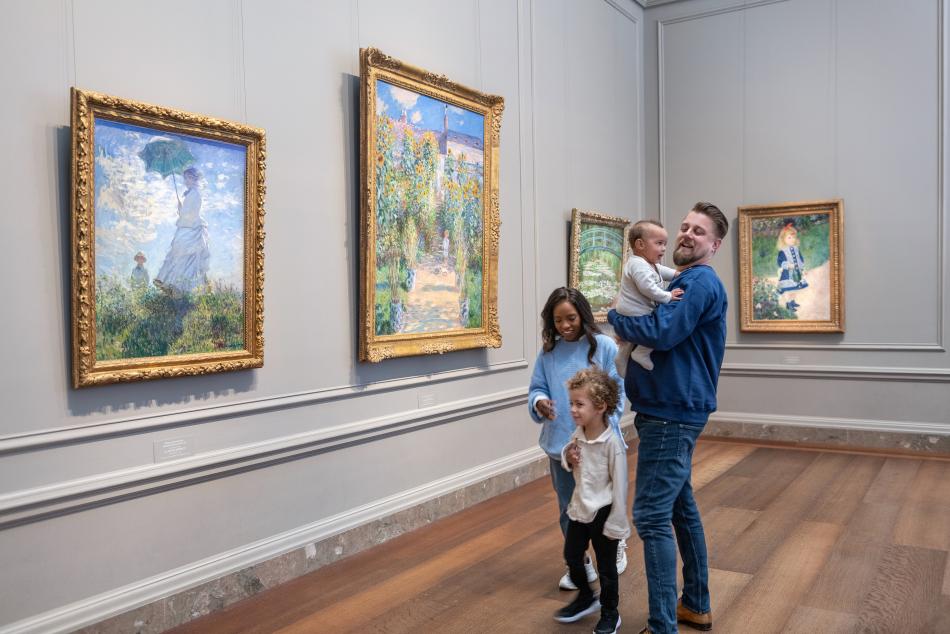Wassily Kandinsky was a musician as well as a painter—sometimes both at the same time! Kandinsky believed that paintings, like music, could express and inspire feelings in everyone. Many of his paintings have bright and bold colors that he thought connected to specific sounds and music.

Language
Look
How many different colors can you find? Name them.
What kinds of lines do you see? Choose a line and use your finger like a paintbrush to trace it in the air.
Can you find two boats in this painting? Can you find a city? Or do you see something else?
What color would you use to express different feelings—Happiness? Sadness? Excitement? Anger?
If this painting were a piece of music, what might it sound like to you?
Read
The Color Monster (Spanish language version: El monstruo de colores)
By Anna Llenas
Color monster has lots of feelings - and a little girl helps him figure out what his feelings are through color.
The Noisy Paint Box: The Colors and Sounds of Kandinsky's Abstract Art
by Barb Rosenstock and Mary GrandPré
Young Kandinsky - "Vasya" - wants to paint to make music. This book tells the story of his life and how his synesthesia allowed him to explore the different possibilities of art.
Make: Paint to music
You Will Need
- Paper
- Paints
- Paintbrushes
- Music to listen to
First, choose a special song or piece of music. Close your eyes and listen to the music. How does it make you feel? What kinds of lines, colors, and shapes do you think of as you listen to the music?
Next, listen to the music again—this time, while painting. Start with a background color (or use colored paper) to show the overall mood of the piece. Then, as you listen, paint a line that follows the melody. Pick a shape, such as a circle or square, and paint it every time you hear a part of the song that repeats. Finally, add colors inside and around the shapes that match the different feelings the music inspires in you.
Vocab Bank
- abstract
- battle
- inspire
- melody
Download
Art Tales: Coloring and Cut-Outs booklet (PDF, 3.5 MB)
Art Tales for Pre-K (PDF, 7.2 MB)
Primeros Pasos En El Arte (PDF, 7.5 MB)
Primeros Pasos En El Arte: Colorear y Recortes (PDF, 3.7 MB)
Visit
Register for the Art Tales pre-K school tour
Submit Student Work
Send images of your students' projects that follow these activities - email [email protected]
You may also like

Educational Resource: Art Starters: Jacob Lawrence
A lesson for preschool to kindergarten students about artist Jacob Lawrence’s 1964 painting Street to Mbari. Students learn how to look at this painting, what you can read to learn more, how to paint a gathering place, and a list of vocabulary terms related to this activity.

Educational Resource: Art Starters: Diego Rivera
A lesson for preschool to kindergarten students about artist Diego Rivera’s painting No. 9, Nature Morte Espagnole. Students learn how to look at this painting, what you can read to learn more, how to make a still life collage, and a list of vocabulary terms related to this activity.

Educational Resource: Art Starters: Louise Bourgeois
A lesson for preschool to kindergarten students about artist Louise Bourgeois' sculpture Spider. Students learn how to look at this sculpture, what you can read to learn more, how to create your own symbolic sculpture, and a list of vocabulary terms related to this activity.




